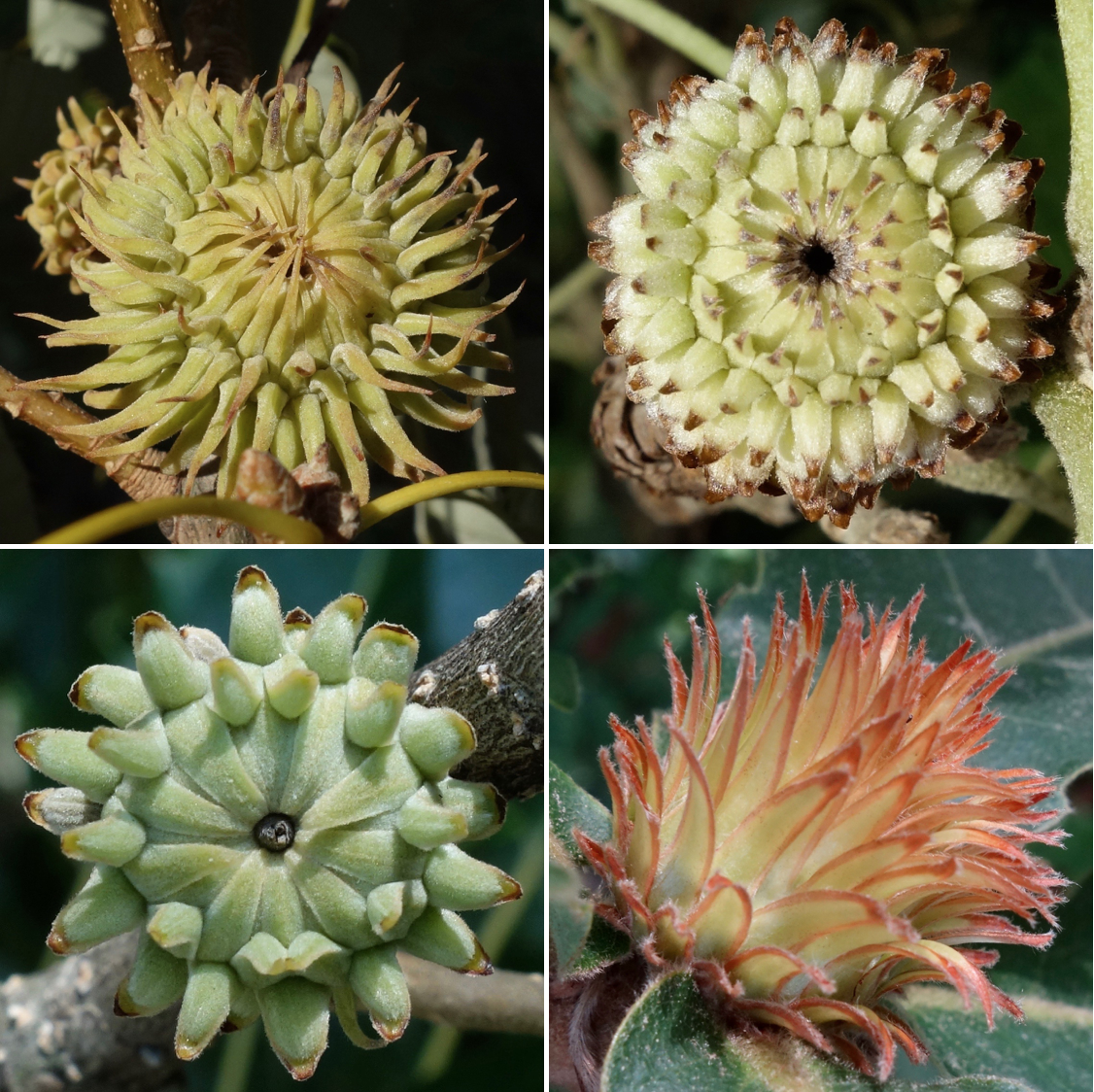Where is the acorn?
August is acorn watching time. While we tend to notice acorns in the autumn when they come tumbling down to earth, most of the action is in late summer. This past week, I have been targeting every oak at the Arnold Arboretum that has generously offered its acorns on lower branches. The amazing thing is how many of these future acorns (the fruit) are still not visible and entirely enclosed by the cupule (the cap)! What gives?

Pictured are four species of oaks at the Arboretum. From upper left and clockwise: Quercus variabilis (17631*B), the Oriental oak, native to eastern Asia; Quercus castaneifolia (239-38*D), the chestnut-leaved oak, native to the Caucasus; Quercus dentata (1590-52*B), the daimyo oak, native to eastern Asia; and finally Quercus acutissima (1257-80*A), the sawtooth oak, native to a broad swath of temperate Asia. The cupules themselves are beautiful and varied. The scale leaves for each species have different textures and colors. One of the most dramatic right now is the daimyo oak, whose cupule scales are edged by a red stripe!
Rest assured that by autumn, each of these cupules/caps will sport a full-fledged acorn fruit. But, in the meantime, the mother tree has a lot of provisioning to do to fill the fruits. For now, enjoy the cupules, which are magnificent in their own right. And keep watching to see the amazing transformation of each acorn from a small hidden structure encased in a beautiful cupule to the mature embryo-laden vessel that gravity will release in the autumn.
Bonus information: Oaks either take one growing season to mature an acorn from a flower or two. In the case of the “biennial” species, these truly are among the slowest flowers/fruits in the world. Flowers open and pollination occurs in spring of the first year followed by seemingly very little else for another twelve months. Then, slow expansion of the cupule in the spring and summer of the second year. Finally, in mid-summer of year two, the future seedling is born and the rest is a mad dash to fill the acorn with food for this next generation. So, even though all four oak species pictured here are at relatively the same developmental stage right now, and will have full-sized acorns in just a couple of months, two of them, the sawtooth oak and Oriental oak, were born (bloomed) in May of 2019!
